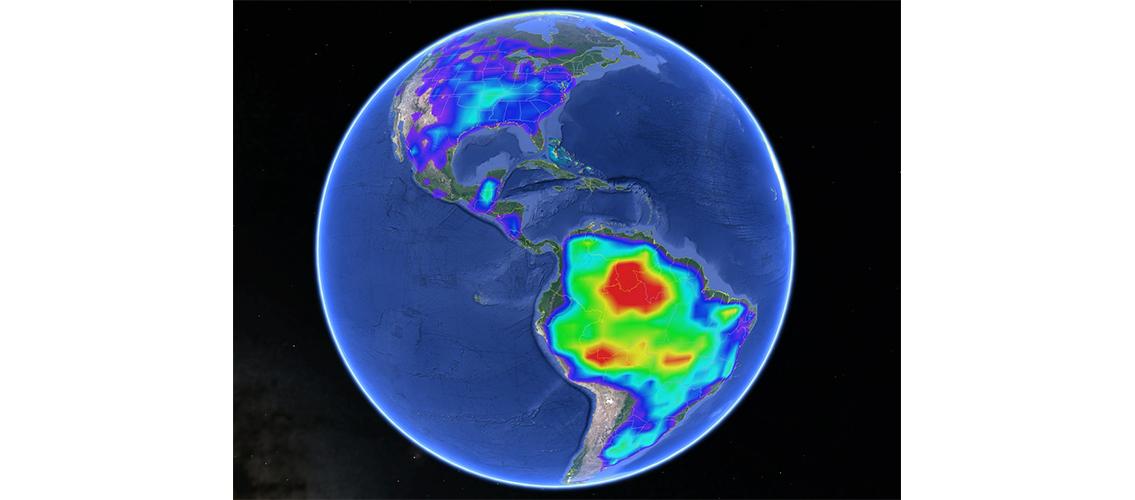
Isoprene is a highly reactive compound released by woody plants into the atmosphere. Its emissions are similar to that of methane and it is a major player in the chemistry of the atmosphere. It interacts with pollutants to affect air quality, plus it reacts with OH radicals, the main atmospheric oxidizing agent. The latter interaction reduces the ability of the atmosphere to rid itself of pollutants and greenhouse gases. Because of its importance in the atmosphere, global measurements of isoprene will be critical for accurate modeling of current and future atmospheric composition.
MSI PI Dylan Millet (professor, Soil, Water, and Climate; Fellow, Institute on the Environment) and Dr. Kelley Wells (lead author and MSI user in the Millet group) and their colleagues have published a paper that describes a new method of measuring isoprene levels from space. The method uses infrared (IR) radiance measurements from the Cross-track Infrared Sounder (CrIS) on NOAA’s Suomi NPP satellite, which are fed into an artificial neural network-based algorithm to derive global isoprene levels. The researchers combined these data with other space-based measurements and atmospheric modeling to evaluate current understanding of isoprene’s effects on atmospheric oxidation, as well as its emissions. The computational models were run on MSI’s supercomputers.
The paper can be found on the journal website: Kelley C. Wells, Dylan B. Millet, Vivienne H. Payne, M. Julian Deventer, Kelvin H. Bates, Joost A. de Gouw, Martin Graus, Carsten Warneke, Armin Wisthaler, Jose D. Fuentes. 2020. Satellite isoprene retrievals constrain emissions and atmospheric oxidation. Nature 585:225-233. doi: 10.1038/s41586-020-2664-3. A Research Brief about the paper can be read on the University of Minnesota’s News website: New insight on the impacts of Earth’s biosphere on air quality.
Professor Millet’s lab uses MSI resources for a wide number of projects relating to the chemical composition of the atmosphere, how it is affected by humans and natural processes, and the implications for health, air pollution, and climate change.
Image description: Atmospheric isoprene measurements from the CrIS satellite sensor. Image is based on results from KC Wells et al., Nature 585:225-233, doi: 10.1038/s41586-020-2664-3.
posted on September 23, 2020